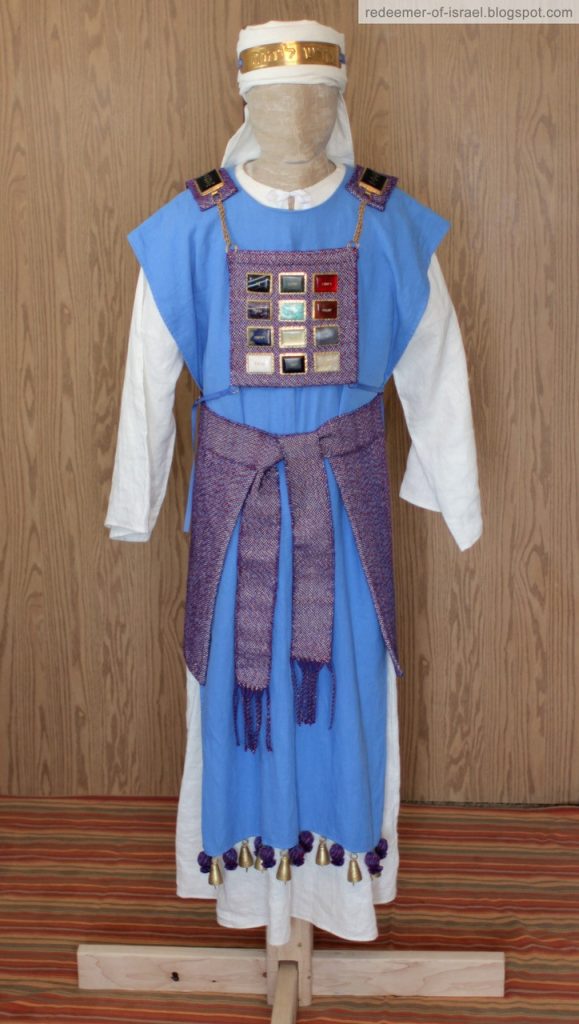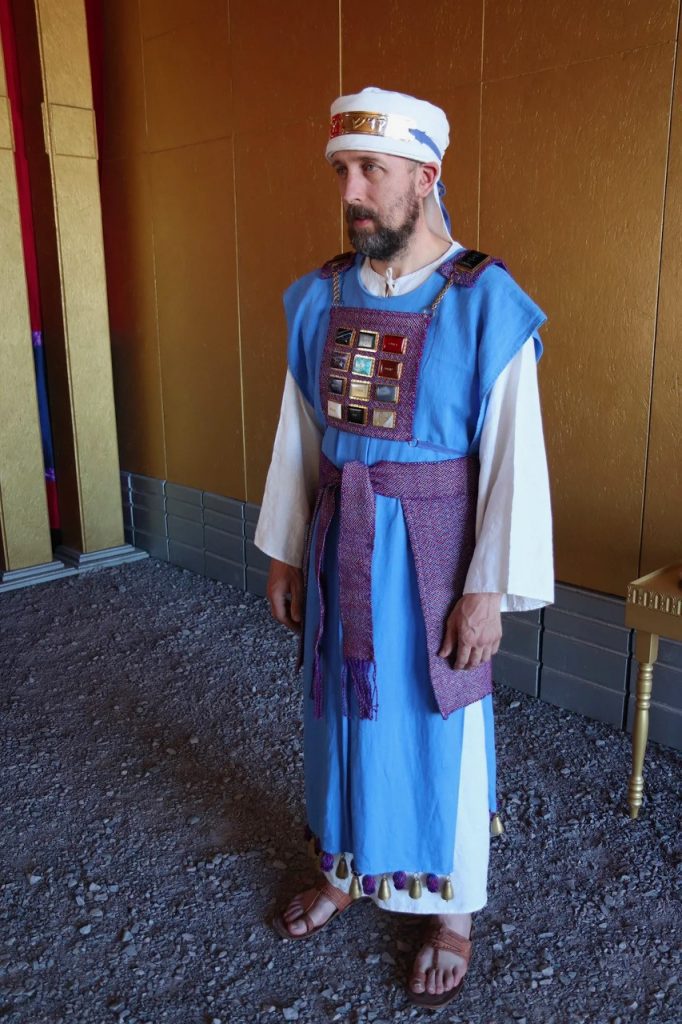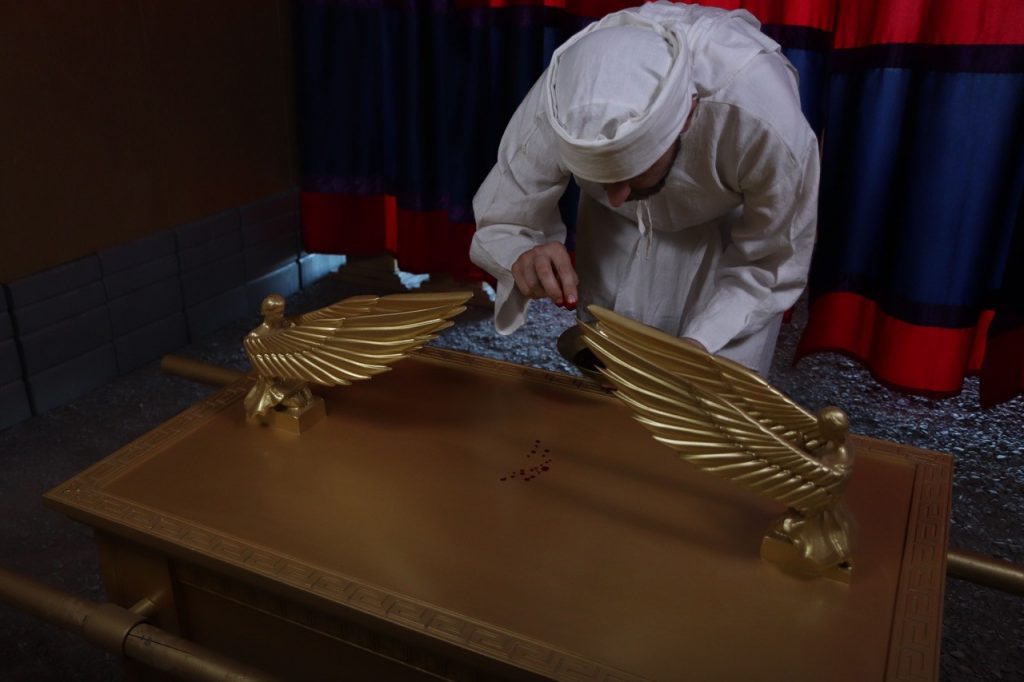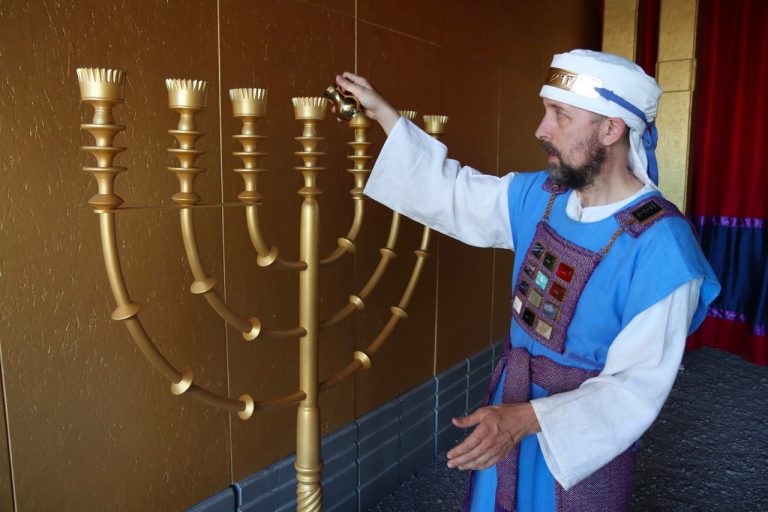1382. What Can We Learn From Ancient Sacred Temple Clothing? By Donald W. Parry · February 3, 2022, in Meridian Magazine
This is helpful and appropriate for anyone who has been to a sacred Temple of the Church of Jesus Christ of Latter Day Saints. To many who have a Temple in their country, or is having one built, this will help you understand many things! It can help us understand many scriptures especially in the Old Testament!
What Can We Learn From Ancient Sacred Temple Clothing?
In his book 175 Temple Symbols and Their Meanings (Deseret Book, 2020), Donald W. Parry carefully deals with seven different entries on the sacred clothing of ancient and modern temples. However, in the present paper, because of space concerns, he deals with one of the seven topics.
A few years ago, in Southern California, a couple informed their Stake President “that their first temple experience overwhelmed them because they didn’t understand the experience.”[1] They were especially perplexed about the sacred temple clothing—why sacred clothing? And what does it all mean? However, when they toured a life-sized replica of the Tabernacle of Moses in Huntington Beach, California, and a docent described the sacred clothing of the ancient high priest, as presented on a mannequin (see the accompanying photo), they changed their view of our present-day temples and their own first temple experience. They then met with Stake President Rick Johnson and stated their desire to return to the temple. President Johnson, explains, “As they learned the history and the ‘why’ for sacred clothing, they understood their own temple experience and the importance of the sacred clothing. The experience at the tour caused them to rethink their experience and they wanted to get back to the temple to enjoy the blessings of the temple.”[2]
This single story is representative of other members of The Church of Jesus Christ of Latter-day Saints, who have gained greater understanding and appreciation of our own temple experience as they have toured one of two life-sized replicas of the Tabernacle of Moses, which two different stakes have built and exhibited during the past handful of years. With the Southern California couple in mind, and others who have had similar experiences, I thought it would be well to consider some of the symbolic meanings attached to sacred clothing, as revealed in the scriptures.

The first mention of sacred clothing exists in the Garden of Eden, where the Lord God made Adam and Eve “coats of skins” and then He “clothed them” (Gen. 3:21). In the books of Exodus and Leviticus, there are three literary units that refer to priestly garments: (1) Exodus 28:1–43 provides general instructions regarding the vestments, emphasizing the vestments of the high priest (Exodus 28:40 and 42 refer to priests); (2) Exodus 39:1–31 sets forth the making of the vestments; and (3) Leviticus 8:5–9 presents the investiture of the high priest. Beyond these key passages, sacred vestments are referred to in several other scriptures throughout the scriptures.
When priests and high priests served in the Mosaic tabernacle or the Jerusalem temple, they wore holy vestments, which were an integral part of the temple setting. The priest’s vestments consisted of four parts—headpiece,[3] sash, tunic, and linen breeches (i.e., undergarments).[4] The high priest’s vestments consisted of eight pieces—the four belonging to the priest plus an ephod (or “special apron”[5]), a robe of the ephod, a breastplate, and a golden plate of the headpiece (see Exodus 29:5–6). The Exodus text does not mention footwear.[6] The texts may suggest a possible order of putting on clothing for priests (see Leviticus 8:13) and high priests (see Leviticus 8:7–10).


On the Day of Atonement, which occurred once a year, the high priest dressed in white and wore the girdle, tunic, mitre, and breeches. Inasmuch as the clothing was holy (see Exodus 28:2–3), priests and high priests were vested with the clothing in a sacred ceremony.

Apart from the important fact that sacred vestments were emblems of power and served to identify the wearer’s place in the sacred precinct, the vestments served three distinct functions:
(1) a pragmatic or practical function, such as to protect the priests from the elements and to provide a high degree of modesty (for example, Exodus 28:42 refers to breeches, or underwear, which provided modesty to the wearer);
(2) an aesthetic function, conveying beauty to those who were privileged to behold them in the setting of the temple precinct (for example, Exodus 28:2 refers to making holy garments “for glory and for beauty”); and
(3) the vestments served a spiritual function, pointing the wearers toward divine actions and attributes through a variety of symbols. The aim of this brief-paper is to examine the symbols attached to the sacred vestments, to perhaps shed light on their spiritual intent and purpose.
Sacred Vestments Were Attached to a Variety of Symbols
Each piece of clothing points to divine actions and attributes through a variety of symbols. These symbols of sacred vestments could be broadly classified into seven groups:
1) The investiture of special vestments signifies one of the gestures of approach.
2) The act of putting on sacred vestments is related to putting on Christ and His holiness.
3) Sacred vestments are associated with salvation, righteousness, glory, and strength.
4) Vestments and clothing sometimes symbolize the person who wears them.
5) When priestly officiants wore sacred vestments, they emulated celestial persons—God, angels, and redeemed souls—who wear sacred vestments.
6) Sacred vestments anticipate the resurrection, when mortals will be clothed with an immortal body.
7) Sacred vestments point to Jesus Christ and His Atonement.
When these symbols of the sacred vestments are considered together, it becomes clear that they ultimately serve to point individuals toward a path of greater understanding of and devotion to the Lord Jesus Christ. Unfortunately, space does not permit me to investigate each of these seven groups in this setting, although I have dealt with them in my book as well as in a separate article.[7] However, in this present paper, I will briefly look at item number 3, “Sacred vestments are associated with salvation, righteousness, glory, and strength.”

Sacred Vestments Are Associated with Salvation, Righteousness, Glory, and Strength
While putting on sacred vestments is a symbol for putting on Christ and accepting His Atonement, putting on or being clothed in the sacred vestments also carries symbolism that focuses individuals on the blessings of accepting Christ’s Atonement. In the following passages, note how the words salvation, righteousness, glory, and strength are positioned with the words clothed, linen, and garments, subtly emphasizing the link between the vestments and Christ-like attributes.
(a) Salvation. “He hath clothed me with the garments of salvation” (Isaiah 61:10); “I will also clothe her priests with salvation” (Psalm 132:16).
(b) Righteousness. “Let thy priests be clothed with righteousness” (Psalm 132:9); “Righteousness shall be the girdle of his loins, and faithfulness the girdle of his reins” (Isaiah 11:5); “For he put on righteousness as a breastplate” (Isaiah 59:17); “He hath covered me with the robe of righteousness” (Isaiah 61:10); “I put on righteousness, and it clothed me: my judgment was as a robe and a diadem” (Job 29:14); “The marriage of the Lamb is come, and his wife hath made herself ready. And to her was granted that she should be arrayed in fine linen, clean and white: for the fine linen is the righteousness of saints” (Revelation 19:7–8).
(c) Glory. “Thou shalt make holy garments for Aaron thy brother for glory and for beauty” (Exodus 28:2; see also Exodus 28:40); “I am clothed upon with glory, and I saw the face of God” (Moses 7:3); “They shall see me … clothed with power and great glory” (D&C 45:44); “Clothed in the brightness of his glory” (D&C 65:5).
(d) Strength. “Awake, awake! Clothe yourself with strength, O Zion; clothe yourself with your beautiful garments, O Jerusalem, the holy city” (Isaiah 52:1).[8]
These four points—salvation, righteousness, glory, and strength—provide links between sacred clothing and the blessings of the Atonement. These four points also presented worshippers with greater spiritual understanding each time they dressed in the sacred vestments in the temple setting.
Conclusion
The scriptures disclose several symbols that are attached to the sacred vestments worn by priests and high priests in the ancient temple. Each piece of clothing used a variety of symbols to point individuals toward divine actions and attributes. When the symbols of the sacred vestments are considered as pieces of a whole, it becomes clear that they serve as a path of increased spirituality, ultimately pointing individuals toward greater understanding of and devotion to the Lord Jesus Christ. We, as members of The Church of Jesus Christ of Latter-day Saints, can gain much by studying the meaning of sacred clothing in the Old Testament and other Standard Works, especially as we worship God in our modern temples.
[1] 175 Temple Symbols and Their Meanings, 24.
[2] 175 Temples Symbols and Their Meanings, 24.
[3] The headpiece (= kjv mitre) was like a “turban, bound cap”; see Exodus 28:4, footnote d.
[4] The linen breeches were “undergarments of plain linen.” John I. Durham, Exodus (WBC 3; Waco, TX: Word Books, 1982), 385.
[5] See Exodus 39:2, footnote a. Haran states that the ephod “is a sort of apron encircling the body from the loins downward.” Menahem Haran, Temples and Temple-Service in Ancient Israel (Winona Lake, IN: Eisenbrauns, 1985), 166.
[6] Haran, citing Exodus 3:5 and Joshua 5:15 as evidence, writes that “Shoes are not included, which serves to indicate that the priests officiated barefoot.” Haran, Temples and Temple-Service in Ancient Israel, 166, note 34. However, lack of mention of footwear does not constitute proof that footwear did not exist.
[7] See Donald W. Parry, 175 Temple Symbols and Their Meanings (Salt Lake City: Deseret Book, 2020), 254–266; See also Donald W. Parry, “Ancient Sacred Vestments: Scriptural Symbols and Meanings,” The Temple on Mount Zion, in Memory of Matthew Brown, September 22, 2012. Edited by William J. Hamblin and David Seeley (Salt Lake City: Eborn Books, 2014), 219–239.
[8] This is my translation of Isaiah 52:1.





Comments